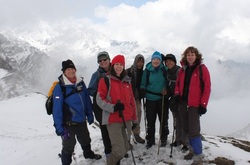 2012 HHC medical team, Nepal
2012 HHC medical team, Nepal Since the release of our latest documentary Hearts In The Himalayas”, I have been inundated with questions about specifics of the medical trek. Based on these questions and what I think I would want to know about the trek, I will do a multi-part blog on the trek covering what to pack, electronics, what to expect on the trek, trekking etiquette and travel concerns. This week’s blog will focus on booking your travel to Nepal.
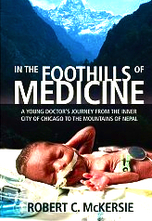
First off, I highly recommend reading the blog by longtime HHC volunteer, Dr. Robert McKersie. It is a very thorough walk-thru of his in-the-trenches experience participating on the medical treks in Nepal. He also has published a book entitled "The Foothills of Medicine", which chronicles the details of the treks from a medical perspective.
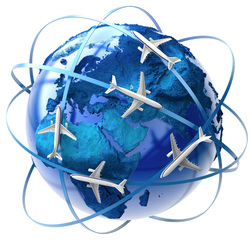
Booking Your Travel and Arrival in Nepal
Here are a few things to consider when booking your travel arrangements. The trek is a total of 14-16 days. You should plan to arrive in Kathmandu a full day before the trek departs, but in MHO that is cutting it close. You and your baggage have a 50/50 chance of arriving on time. Every time I have traveled to Asia, my baggage has been lost for no less than two days. Nepal is no exception.
I recommend planning for 18 days at a minimum because of the challenges of international travel, lost luggage, missed or canceled flights as well as unpredictable political uprisings in Nepal or connecting flight countries. Nearly everyone on these treks has lost their luggage at some point-usually in India. My gear was lost for 7 DAYS connecting in Dubai! Make sure you book your flights to accommodate these situations.
Here are a few things to consider when booking your travel arrangements. The trek is a total of 14-16 days. You should plan to arrive in Kathmandu a full day before the trek departs, but in MHO that is cutting it close. You and your baggage have a 50/50 chance of arriving on time. Every time I have traveled to Asia, my baggage has been lost for no less than two days. Nepal is no exception.
I recommend planning for 18 days at a minimum because of the challenges of international travel, lost luggage, missed or canceled flights as well as unpredictable political uprisings in Nepal or connecting flight countries. Nearly everyone on these treks has lost their luggage at some point-usually in India. My gear was lost for 7 DAYS connecting in Dubai! Make sure you book your flights to accommodate these situations.
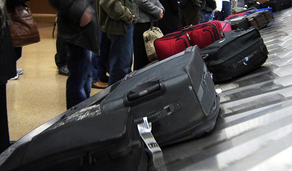
The trek won’t be delayed because your luggage is missing. I highly recommend travel insurance. My go-to travel insurance company is Travel Safe and I always get the “cancel for any reason” policy. Make sure you have a good email address and phone number for them and contact them the second something goes wrong. Keep all of your receipts and travel docs no matter what! (Including boarding passes, correspondence). I’ll write a future blog on what to do if this happens.
Although it is cheaper to go through India, keep in mind that Mumbai is notorious for misplacing luggage and or leaving it on the tarmac in the torrential downpours. It might be worth the extra money to go through Singapore or Paris. One more tip, if a connection has been missed and the airline offers to "hold" your luggage for the next flight, do NOT accept it. Get your luggage in your possession asap otherwise your luggage will go on an all expense paid 7 day around the world tour like mine did!
Although it is cheaper to go through India, keep in mind that Mumbai is notorious for misplacing luggage and or leaving it on the tarmac in the torrential downpours. It might be worth the extra money to go through Singapore or Paris. One more tip, if a connection has been missed and the airline offers to "hold" your luggage for the next flight, do NOT accept it. Get your luggage in your possession asap otherwise your luggage will go on an all expense paid 7 day around the world tour like mine did!
Booking Your Return Flight
On the back end of the trek, HHC does everything in their power to arrive back in KTM early afternoon. It is possible to leave the same night as you return, but I would not recommend that due to strikes and government shutdowns or unpredictable weather conditions during the trek. Most people leave the following day without problems.
On the back end of the trek, HHC does everything in their power to arrive back in KTM early afternoon. It is possible to leave the same night as you return, but I would not recommend that due to strikes and government shutdowns or unpredictable weather conditions during the trek. Most people leave the following day without problems.
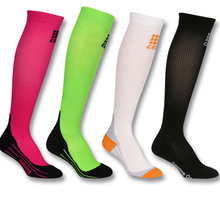
Must Brings For The Flight
Couple of things you might consider for the flight is over the calf 15-30 mm HG compression socks, baby aspirin and a large empty water bottle (to fill once you’re on board). All help to prevent DTV. Believe me, you do not want to have your legs and feet swell up during the flight. On my first trip over, my leg swelled up nearly double in size. Thankfully, no blood clots formed. You should be drinking a lot of water a week or so prior to your trek. Condition your body for the trek and keep yourself hydrated.
Couple of things you might consider for the flight is over the calf 15-30 mm HG compression socks, baby aspirin and a large empty water bottle (to fill once you’re on board). All help to prevent DTV. Believe me, you do not want to have your legs and feet swell up during the flight. On my first trip over, my leg swelled up nearly double in size. Thankfully, no blood clots formed. You should be drinking a lot of water a week or so prior to your trek. Condition your body for the trek and keep yourself hydrated.
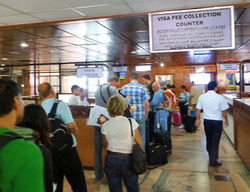
You’ve Arrived!
HHC will arrange to have you picked up and returned to the airport so you do not need to arrange transfer. When you arrive at the airport a bus will pick you up on the tarmac and haul you to the customs area in the terminal. Immediately pick up the customs forms and visa application which you will find on tables near the windows. Make sure to bring your own pen. Once you complete the forms, get in the line for foreigners entering the country (it is on the left side of the room). The line will go fairly fast even when crowded. At this writing, the visa cost is around $40 US for 30 days (they accept dollars/cash only). Longer stays cost up to $100. Don’t lose your documents!!! You can also obtain a visa ahead of time but there really is no need to do this since the process is so easy upon arrival in Kathmandu.
HHC will arrange to have you picked up and returned to the airport so you do not need to arrange transfer. When you arrive at the airport a bus will pick you up on the tarmac and haul you to the customs area in the terminal. Immediately pick up the customs forms and visa application which you will find on tables near the windows. Make sure to bring your own pen. Once you complete the forms, get in the line for foreigners entering the country (it is on the left side of the room). The line will go fairly fast even when crowded. At this writing, the visa cost is around $40 US for 30 days (they accept dollars/cash only). Longer stays cost up to $100. Don’t lose your documents!!! You can also obtain a visa ahead of time but there really is no need to do this since the process is so easy upon arrival in Kathmandu.
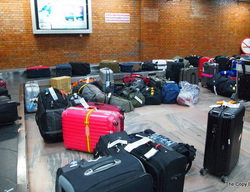
Did My Bags Make It?
Once through customs you will head to pick up your bags. Don’t get too worried about all the personnel and X-ray machines. Nine times out of ten they will just move you through quickly without issues. (NOT the case when you leave). This is BEFORE you get your luggage. Once you get through, you will see the baggage carousel. Hopefully your luggage will arrive on the belt. If it does not, you will have to go through the whole claims process. I will write future blog about that topic since the process is a nightmare.
Your bags may be X-Rayed one more time. The machines are there, but half the time they just waive you through. If you do not see anyone tending the machine, just walk through. Once you get past this point, you will be directed to outside of the terminal.
Once through customs you will head to pick up your bags. Don’t get too worried about all the personnel and X-ray machines. Nine times out of ten they will just move you through quickly without issues. (NOT the case when you leave). This is BEFORE you get your luggage. Once you get through, you will see the baggage carousel. Hopefully your luggage will arrive on the belt. If it does not, you will have to go through the whole claims process. I will write future blog about that topic since the process is a nightmare.
Your bags may be X-Rayed one more time. The machines are there, but half the time they just waive you through. If you do not see anyone tending the machine, just walk through. Once you get past this point, you will be directed to outside of the terminal.
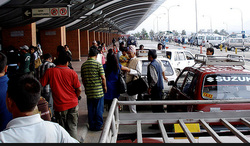
Through Customs, Now What?
Warning, it is absolutely mad chaos outside of the terminal (unless it is really late at night). There will be lots of people yelling and motioning for you to come to them. Be careful! Do NOT go beyond the curb. Very aggressive “porters” who will offer to take your luggage to the other side of the street will bombard you and expect money. Just wait at the curb for the HHC driver (who will have a sign with your name or HHC on it). When you see him, he will motion for you to come to him and will get you to the vehicle. Continue to tell the “porters” “NO” and shake your head to send them away. If you smile a softly say “no thank you”, that will only encourage them. You don’t have to get mean. Just be polite. I would have a few coins handy just in case one of the “porters” manages to grab a bag when you are not looking. When they bring it to the car, drop a few coins in his hand. BTW, do not stop to get money exchanged. You will be able to do this at the hotel.
Warning, it is absolutely mad chaos outside of the terminal (unless it is really late at night). There will be lots of people yelling and motioning for you to come to them. Be careful! Do NOT go beyond the curb. Very aggressive “porters” who will offer to take your luggage to the other side of the street will bombard you and expect money. Just wait at the curb for the HHC driver (who will have a sign with your name or HHC on it). When you see him, he will motion for you to come to him and will get you to the vehicle. Continue to tell the “porters” “NO” and shake your head to send them away. If you smile a softly say “no thank you”, that will only encourage them. You don’t have to get mean. Just be polite. I would have a few coins handy just in case one of the “porters” manages to grab a bag when you are not looking. When they bring it to the car, drop a few coins in his hand. BTW, do not stop to get money exchanged. You will be able to do this at the hotel.
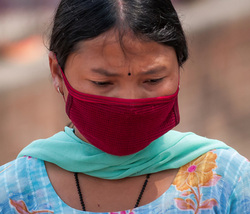
Tip: Before you leave home, purchase a medical face mask. I always buy two because I always end up losing one or loaning it out. Now is when you will need it. The air pollution in Nepal is awful. Wear your mask as often as possible. The last thing you need is to get a respiratory infection prior to the trek. This is why I would not recommend coming into Nepal early for sightseeing prior to the trek. Save your sightseeing until after the trek. (keep your mask for the ride up and back on the trek)
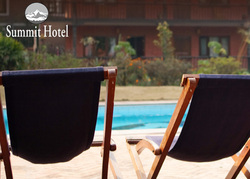
Hotel At Last
The driver will take you to the hotel and Anil will be there to welcome you and assist you in checking in.
Now is the time to get your currency exchanged. Your hotel will handle this for you or you can walk to a nearby ATM. I would recommend converting only what you need for the days prior to your trek departure. You will need Nepalese Rupee (NR) for taxis, tips etc.. On the trek, you will need NR for snacks, sodas and laundry. More on that in a future blog.
If you have time, try to book a massage before the trek departs. Long flights can have a bad effect on legs. The massage helps with circulation. Anil or the hotel can recommend decent massage salons nearby. (plan on paying with NR)
Make sure you drink as much water as you can stand in order to hydrate your body for the trek. Down the street (to the right) from the hotel is a small convenience store should you need to purchase water, snacks, beauty/health/bathroom items (they even have wine). Anil will arrange for travel down to the shopping district for items not available at the convenience store. There are stores similar to Walmart that sell medical supplies, electronics, trekking supplies etc.
There will also be time factored in for touring and souvenir shopping as well as a few group dinners. There will be a dinner for all the trekkers to get acquainted. Don’t be a snob. Get to know the other volunteers. You will be spending a lot of time together in not so pleasant conditions, so make the effort to get to know your trek mates. You will be glad you did. A number of folks are repeat volunteers and are happy to share information to the newbies. Dr. Robert McKersie, Dr. Caroline Jones and Dr. Elizabeth Ashby are usually on treks every year. They are a lot of fun to hang out with and most likely will be the ones who help you out along the way so introduce yourself to them. In a future blog I will detail the trek.
The driver will take you to the hotel and Anil will be there to welcome you and assist you in checking in.
Now is the time to get your currency exchanged. Your hotel will handle this for you or you can walk to a nearby ATM. I would recommend converting only what you need for the days prior to your trek departure. You will need Nepalese Rupee (NR) for taxis, tips etc.. On the trek, you will need NR for snacks, sodas and laundry. More on that in a future blog.
If you have time, try to book a massage before the trek departs. Long flights can have a bad effect on legs. The massage helps with circulation. Anil or the hotel can recommend decent massage salons nearby. (plan on paying with NR)
Make sure you drink as much water as you can stand in order to hydrate your body for the trek. Down the street (to the right) from the hotel is a small convenience store should you need to purchase water, snacks, beauty/health/bathroom items (they even have wine). Anil will arrange for travel down to the shopping district for items not available at the convenience store. There are stores similar to Walmart that sell medical supplies, electronics, trekking supplies etc.
There will also be time factored in for touring and souvenir shopping as well as a few group dinners. There will be a dinner for all the trekkers to get acquainted. Don’t be a snob. Get to know the other volunteers. You will be spending a lot of time together in not so pleasant conditions, so make the effort to get to know your trek mates. You will be glad you did. A number of folks are repeat volunteers and are happy to share information to the newbies. Dr. Robert McKersie, Dr. Caroline Jones and Dr. Elizabeth Ashby are usually on treks every year. They are a lot of fun to hang out with and most likely will be the ones who help you out along the way so introduce yourself to them. In a future blog I will detail the trek.
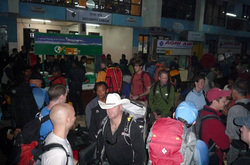
After The Trek
HHC will arrange for your transfer to the airport for your flight home. Your last minute fees to HHC will be paid at that time. The fees will include the tips to the porters and tours etc.
The checking in experience at the KTM airport is nothing to look forward to, so adjust your attitude accordingly. Expect very long (disorganized) lines, cranky travelers, numerous searches (personal and bags) before you even get to the ticket counter to check in then numerous searches after. You may be required to weigh your bags several times.
Make sure you take NR to the airport. You will be expected to pay any baggage fees/airline fees in NR (cash). If you do not have NR, you will be asked to exit the line and walk over to the exchange counter. Then you will have to wait in line again to complete the check-in process. The exchange will accept credit cards, but they charge a very high fee Plan on an hour or so for check in once you get past the entrance security line. Tip: Some security people will expect a tip. I don’t tip them. Don’t be surprised if one expresses their displeasure and begins yelling at you.
Once you are checked in you will go up to the second level and begin the long process of security clearance. There will be a counter immediately at the top of the escalator. You will check in here to stamp your documents. (remember the ones from when you first arrived in Nepal?) From here you will go to another counter which is to the far right of the escalator for more stamping of your documents.
You will go through several stages of security. You and your carry-on luggage will be searched and X-rayed numerous times. Make sure you get the stickers for each search; otherwise they will send you through again. Plan on 45 minutes to an hour for this process.
You’re finally through security and now have to find the gate. There is one gate but several seating areas. It is your responsibility to figure out when your flight is loading. There are no announcements for loading. Just read the sign above the gate.
Once you go through "the gate", you will be directed into another room that will become very crowded. The security people will split everyone up by gender. Women and children on one side, men on the other and you will be squeezed in like sardines but it should move fairly quickly. From here you will be put on a bus, which takes you to your plane.
Next: What To Pack
HHC will arrange for your transfer to the airport for your flight home. Your last minute fees to HHC will be paid at that time. The fees will include the tips to the porters and tours etc.
The checking in experience at the KTM airport is nothing to look forward to, so adjust your attitude accordingly. Expect very long (disorganized) lines, cranky travelers, numerous searches (personal and bags) before you even get to the ticket counter to check in then numerous searches after. You may be required to weigh your bags several times.
Make sure you take NR to the airport. You will be expected to pay any baggage fees/airline fees in NR (cash). If you do not have NR, you will be asked to exit the line and walk over to the exchange counter. Then you will have to wait in line again to complete the check-in process. The exchange will accept credit cards, but they charge a very high fee Plan on an hour or so for check in once you get past the entrance security line. Tip: Some security people will expect a tip. I don’t tip them. Don’t be surprised if one expresses their displeasure and begins yelling at you.
Once you are checked in you will go up to the second level and begin the long process of security clearance. There will be a counter immediately at the top of the escalator. You will check in here to stamp your documents. (remember the ones from when you first arrived in Nepal?) From here you will go to another counter which is to the far right of the escalator for more stamping of your documents.
You will go through several stages of security. You and your carry-on luggage will be searched and X-rayed numerous times. Make sure you get the stickers for each search; otherwise they will send you through again. Plan on 45 minutes to an hour for this process.
You’re finally through security and now have to find the gate. There is one gate but several seating areas. It is your responsibility to figure out when your flight is loading. There are no announcements for loading. Just read the sign above the gate.
Once you go through "the gate", you will be directed into another room that will become very crowded. The security people will split everyone up by gender. Women and children on one side, men on the other and you will be squeezed in like sardines but it should move fairly quickly. From here you will be put on a bus, which takes you to your plane.
Next: What To Pack
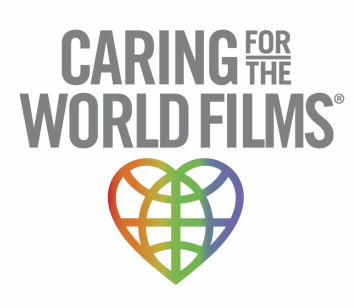
 RSS Feed
RSS Feed